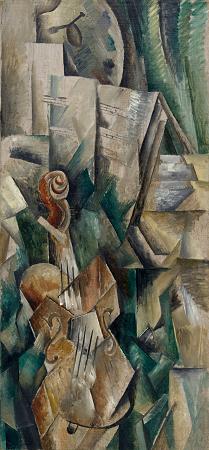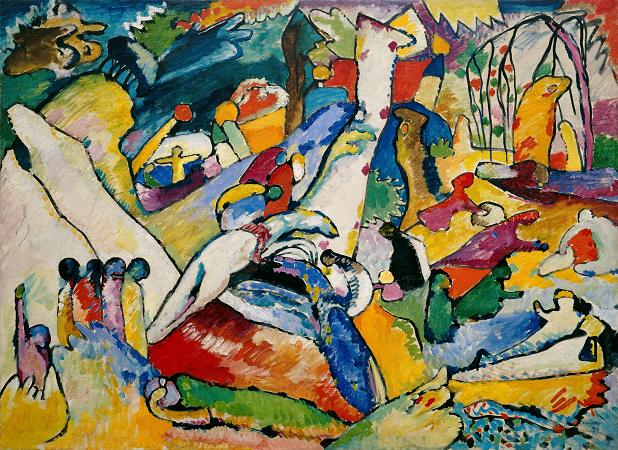Guggenheim Museum. The Solomon R. Guggenheim Museum, often referred to as The Guggenheim, is an art museum located at 1071 Fifth Avenue on the corner of East 89th Street in the Upper East Side neighborhood of Manhattan, New York City. It is the permanent home of a continuously expanding collection of Impressionist, Post-Impressionist, early Modern, and contemporary art and also features special exhibitions throughout the year. The museum was established by the Solomon R. Guggenheim Foundation in 1939 as the Museum of Non-Objective Painting, under the guidance of its first director, Hilla von Rebay. It adopted its current name after the death of its founder Solomon R. Guggenheim in 1952. In 1959, the museum moved from rented space to its current building, a landmark work of 20th-century architecture designed by Frank Lloyd Wright. The cylindrical building, wider at the top than at the bottom, was conceived as a temple of the spirit. Its unique ramp gallery extends up from ground level in a long, continuous spiral along the outer edges of the building to end just under the ceiling skylight. The building underwent extensive expansion and renovations in 1992 when an adjoining tower was built, and from 2005 to 2008. The museum's collection has grown over eight decades and is founded upon several important private collections, beginning with that of Solomon R. Guggenheim. The collection is shared with sister museums in Bilbao, Spain and elsewhere. In 2013, nearly 1.2 million people visited the museum, and it hosted the most popular exhibition in New York City. Solomon R. Guggenheim, a member of a wealthy mining family, had been collecting works of the old masters since the 1890s. In 1926, he met artist Hilla von Rebay, who introduced him to European avant-garde art, in particular abstract art that she felt had a spiritual and utopian aspect. Guggenheim completely changed his collecting strategy, turning to the work of Wassily Kandinsky, among others. He began to display his collection to the public at his apartment in the Plaza Hotel in New York City. As the collection grew, he established the Solomon R. Guggenheim Foundation, in 1937, to foster the appreciation of modern art. The foundation's first venue for the display of art, the Museum of Non-Objective Painting, opened in 1939 under the direction of Rebay, in midtown Manhattan. Under Rebay's guidance, Guggenheim sought to include in the collection the most important examples of non-objective art available at the time by early modernists such as Rudolf Bauer, Rebay, Kandinsky, Piet Mondrian, Marc Chagall, Robert Delaunay, Fernand Leger, Amedeo Modigliani and Pablo Picasso. By the early 1940s, the foundation had accumulated such a large collection of avant-garde paintings that the need for a permanent museum building had become apparent. In 1943, Rebay and Guggenheim wrote a letter to Frank Lloyd Wright asking him to design a structure to house and display the collection. Wright accepted the opportunity to experiment with his organic style in an urban setting. It took him 15 years, 700 sketches, and six sets of working drawings to create the museum. In 1948, the collection was greatly expanded through the purchase of art dealer Karl Nierendorf's estate of some 730 objects, notably German expressionist paintings. By that time, the foundation's collection included a broad spectrum of expressionist and surrealist works, including paintings by Paul Klee, Oskar Kokoschka and Joan Miro. After Guggenheim's death in 1949, members of the Guggenheim family who sat on the foundation's board of directors had personal and philosophical differences with Rebay, and in 1952 she resigned as director of the museum. Nevertheless, she left a portion of her personal collection to the foundation in her will, including works by Kandinsky, Klee, Alexander Calder, Albert Gleizes, Mondrian and Kurt Schwitters. The museum was renamed the Solomon R. Guggenheim Museum in 1952. Rebay conceived of the space as a temple of the spirit that would facilitate a new way of looking at the modern pieces in the collection. She wrote to Wright that each of these great masterpieces should be organized into space, and only you. would test the possibilities to do so. I want a temple of spirit, a monument! The critic Paul Goldberger later wrote that, before Wright's modernist building, there were only two common models for museum design: Beaux-arts Palace. and the International Style Pavilion. Goldberger thought the building a catalyst for change, making it socially and culturally acceptable for an architect to design a highly expressive, intensely personal museum. In this sense almost every museum of our time is a child of the Guggenheim.
more...














